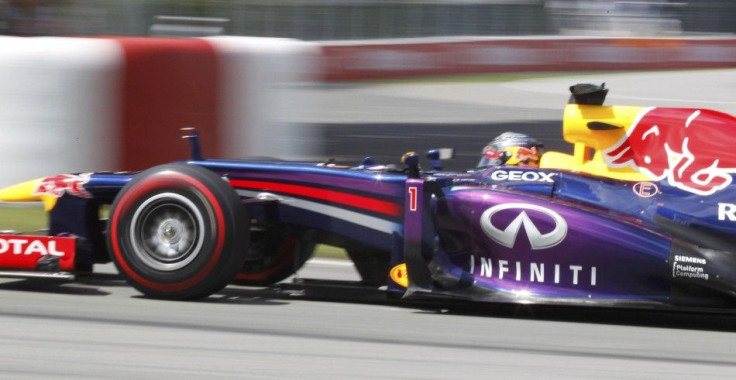
Red Bull are at the top once again as Sebastian Vettel dominated all weekend at the Canadian GP. However, video evidence from the race suggests that there are more to the blisteringly fast RB9 than meets the eye.
According to experts at Axis of Oversteer, Red Bull Racing has successfully managed to shroud a highly advanced traction control system, which is illegal under FIA regulations, within their car without the knowledge of racing stewards.
While I am unable to confirm when Red Bull chief technical officer Adrian Newey was coined "the Leonardo Da Vinci of Formula 1," one of the greatest racing engineer of our time truly lives up to his reputation if evidence of superior traction control development indicated from the Montreal Grand Prix is true.
Rather than actually develop a true traction control unit, Axis of Oversteer suggests that cutting edge engine mapping softwares are applied to a number of cars to varied levels of success. Axis of Oversteer shared its thoughts on Red Bull's racing advantage:
Traction control as a specific component is banned but its function is now duplicated by all, with different degrees of success, via engine maps that manipulate torque curves and use partial firing of cylinders to achieve the a similar result. Mapping is one of the black arts of modern racing and one essentially impossible to police.
How exactly does engine mapping substitute traction control? According to Formula 1 blog, engineers may intentionally reduce the amount of torque available in the mid RPM range, or where a driver's RPM will most likely hover over when exiting a corner. By only providing 80 to 90 percent of torque at 100 percent throttle coming out from a turn, the engine crucially minimizes wheel spin and optimizes traction.
However, in the case of Mark Webber's corner exit [while punting a poor Caterham, no less], a rhythmic pulse of wheelspin and traction is clearly indicated, forming a pattern that can only be described as "inverse" ABS. Will engine mapping do that too?!
All in all, Montreal GP race winner Sebastian Vettel managed to leave the grid behind in a wake of dust as he gained an incredible 2.5 second advantage on Lewis Hamilton by the end of the first lap alone. Until proven otherwise, it is safe to say that the Red Bull RB9 is the quickest car on the Formula 1 grid.
Despite the latest video evidence, it is difficult for FIA officials to actually identify what technique Red Bull might have used to one-up the racing regulations. Ultimately, all is fair in Formula 1 until someone gets caught. While Red Bull's engine mapping advantage is like getting away with murder for some, these innovations only push the technological envelope further.
However, the technical advantages introduced in motorsports come with a cost. As technical superiority begins to dictate race results, the talents necessary from a racing driver is greatly diminished. So, is Sebastian Vettel truly the quickest driver on the grid, or is his "Hungry Heidi" RB9 doing all the work?
Share your thoughts in the comment section below!




